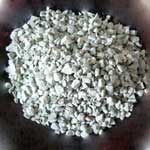Showing Spotlights 105 - 112 of 151 in category All (newest first):
 A very ambitious idea that has been kicked around for the past couple of years has gained a lot of momentum over the past few months. The vision that, if realized, would be a true energy revolution, is called Desertec and would amount to the biggest solar energy project of all times. The project, if realized, will cost 400-500 billion euros ($550-700 bn) and deliver its first energy in about 10 years. The basic idea is to install a huge network of concentrating solar-thermal power plants in the Sahara desert and build a network of High-Voltage Direct Current transmission lines to carry the electricity to Europe. The Desertec concept describes the perspective of a sustainable supply of electricity for Europe, the Middle East and North Africa up to the year 2050. By then, it could satisfy as much as 15 percent of the European Union's power needs. It shows that a transition to competitive, secure and compatible supply is possible using renewable energy sources and efficiency gains, and fossil fuels as backup for balancing power. Also, the technology exists today - it's the scale of the vision that's revolutionary.
A very ambitious idea that has been kicked around for the past couple of years has gained a lot of momentum over the past few months. The vision that, if realized, would be a true energy revolution, is called Desertec and would amount to the biggest solar energy project of all times. The project, if realized, will cost 400-500 billion euros ($550-700 bn) and deliver its first energy in about 10 years. The basic idea is to install a huge network of concentrating solar-thermal power plants in the Sahara desert and build a network of High-Voltage Direct Current transmission lines to carry the electricity to Europe. The Desertec concept describes the perspective of a sustainable supply of electricity for Europe, the Middle East and North Africa up to the year 2050. By then, it could satisfy as much as 15 percent of the European Union's power needs. It shows that a transition to competitive, secure and compatible supply is possible using renewable energy sources and efficiency gains, and fossil fuels as backup for balancing power. Also, the technology exists today - it's the scale of the vision that's revolutionary.
Jul 13th, 2009
 In a previous Spotlight we wrote about the fact that the environmental footprint created by today's nanomanufacturing technologies are conflicting with the general perception that nanotechnology is 'green' and clean. Adding to these concerns, a new study looks at the waste solids generated by the production of metallofullerenes and fullerenes and addresses the question whether feedstock-associated metals pose potential risks to aquatic receptors. The intent of this new study was to communicate that the purity of nanomaterials should be heavily characterized to ensure that the toxicological ramifications of the actual finished nanoproduct is accurately represented. Additionally, the authors suggest that carbon nanomanufacturing byproducts should be characterized so as to facilitate more informed decision-making on management of their associated waste streams.
In a previous Spotlight we wrote about the fact that the environmental footprint created by today's nanomanufacturing technologies are conflicting with the general perception that nanotechnology is 'green' and clean. Adding to these concerns, a new study looks at the waste solids generated by the production of metallofullerenes and fullerenes and addresses the question whether feedstock-associated metals pose potential risks to aquatic receptors. The intent of this new study was to communicate that the purity of nanomaterials should be heavily characterized to ensure that the toxicological ramifications of the actual finished nanoproduct is accurately represented. Additionally, the authors suggest that carbon nanomanufacturing byproducts should be characterized so as to facilitate more informed decision-making on management of their associated waste streams.
Jun 8th, 2009
 Zeolites are microporous, aluminosilicate minerals commonly used as commercial adsorbents. These materials are also known as molecular sieve - they contain tiny pores of a precise and uniform size that are useful as adsorbent for gases and liquids. Due to these characteristics, zeolite has found wide applications in adsorption, catalysis, and the removal of heavy metal ions from industrial wastewaters. The zeolites commonly used to remove heavy metal ions from industrial effluent are in the form of fine powders and must be recovered by solid-liquid separation subsequent to the purification process. Although the separation is possible for single-phase liquid or gas detoxification processes, the practical application of fine zeolite powders to complex multiphase systems is rather limited. Researchers in Canda have now devised a new technology to separate the spent sorbent powders from treated streams. This could extend the application of zeolites to a much wider range of systems.
Zeolites are microporous, aluminosilicate minerals commonly used as commercial adsorbents. These materials are also known as molecular sieve - they contain tiny pores of a precise and uniform size that are useful as adsorbent for gases and liquids. Due to these characteristics, zeolite has found wide applications in adsorption, catalysis, and the removal of heavy metal ions from industrial wastewaters. The zeolites commonly used to remove heavy metal ions from industrial effluent are in the form of fine powders and must be recovered by solid-liquid separation subsequent to the purification process. Although the separation is possible for single-phase liquid or gas detoxification processes, the practical application of fine zeolite powders to complex multiphase systems is rather limited. Researchers in Canda have now devised a new technology to separate the spent sorbent powders from treated streams. This could extend the application of zeolites to a much wider range of systems.
May 18th, 2009
 Carbon nanotubes possess physicochemical properties that make them an attractive possibility for nuclear waste management, especially when compared to the current tools involving activated carbon. In the environmental field, carbon nanotubes application is regarded as extremely promising for the development of novel energy-storage techniques, sensors, and sorbent materials for myriad uses including waste management. A group of European scientists want to stimulate a discussion on how the potential of carbon nanomaterials for nuclear waste mangement could be realized. They argue that the significance of the possible role of carbon nanotubes in treating and sequestering nuclear waste stems from a number of recent research results that specifically investigate the interaction between CNTs and actinides or lanthanides.
Carbon nanotubes possess physicochemical properties that make them an attractive possibility for nuclear waste management, especially when compared to the current tools involving activated carbon. In the environmental field, carbon nanotubes application is regarded as extremely promising for the development of novel energy-storage techniques, sensors, and sorbent materials for myriad uses including waste management. A group of European scientists want to stimulate a discussion on how the potential of carbon nanomaterials for nuclear waste mangement could be realized. They argue that the significance of the possible role of carbon nanotubes in treating and sequestering nuclear waste stems from a number of recent research results that specifically investigate the interaction between CNTs and actinides or lanthanides.
Mar 23rd, 2009
 As nanotechnology applications and nanomaterials slowly move into mainstream manufacturing, there will have to be an increasing focus on the environmental footprint that the production of various nanomaterials creates. A growing research body promises to lead to green(er) nanomanufacturing technologies. However, as we discussed in a Nanowerk Spotlight last year, this emerging field of green nanoscience faces considerable research challenges to achieve the maximum performance and benefit from nanotechnology while minimizing the impact on human health and the environment. As it stands now, it remains to be seen what the environmental footprint of nanotechnologies will be. So far, the message is mixed.
As nanotechnology applications and nanomaterials slowly move into mainstream manufacturing, there will have to be an increasing focus on the environmental footprint that the production of various nanomaterials creates. A growing research body promises to lead to green(er) nanomanufacturing technologies. However, as we discussed in a Nanowerk Spotlight last year, this emerging field of green nanoscience faces considerable research challenges to achieve the maximum performance and benefit from nanotechnology while minimizing the impact on human health and the environment. As it stands now, it remains to be seen what the environmental footprint of nanotechnologies will be. So far, the message is mixed.
Feb 23rd, 2009
 The flurry of recent announcements regarding reports, international cooperations, and new research activities that deal with the potential risks of manufactured nanomaterials is a clear indication that the field of nanotoxicology is gaining momentum - and not too soon. While there still is no coherent international approach to determining if and what risks are posed by what kind of nanotechnology materials, individual research groups are picking certain areas of concern and forge ahead with - often highly specific - toxicology studies. A lack of standards and definitions makes these early investigations hard to compare and sometimes they even contradict each other, a situation that is especially confusing in risk assessments of carbon nanotubes. Some studies, though, present findings that, on the face of it, are especially worrying in their potential implications and deserve much more attention to be sorted out one way or another. A recent report on the toxicity of metal nanoparticles in soil is such an example.
The flurry of recent announcements regarding reports, international cooperations, and new research activities that deal with the potential risks of manufactured nanomaterials is a clear indication that the field of nanotoxicology is gaining momentum - and not too soon. While there still is no coherent international approach to determining if and what risks are posed by what kind of nanotechnology materials, individual research groups are picking certain areas of concern and forge ahead with - often highly specific - toxicology studies. A lack of standards and definitions makes these early investigations hard to compare and sometimes they even contradict each other, a situation that is especially confusing in risk assessments of carbon nanotubes. Some studies, though, present findings that, on the face of it, are especially worrying in their potential implications and deserve much more attention to be sorted out one way or another. A recent report on the toxicity of metal nanoparticles in soil is such an example.
Jan 5th, 2009
 Synthetic fibers are ubiquitous in modern society and their manufacture represents a huge, multi-billion dollar worldwide industry. Synthetic fibers - carbon fibers, nylon, polyester, kevlar, spandex, etc. - are manufactured from fossil fuels, usually from oil, but sometimes from coal or natural gas. Most of these materials are not biodegradable and, in addition to their significant carbon footprint during production, they pose environmental problems at the end of their life cycle. Natural fibers, on the other hand, such as wool and cotton, come from renewable animal or plant sources but they usually lack the high-performance characteristics of many synthetic fibers. This may change, as the new field of bio-based nanomaterials promises to deliver environmentally friendly, high-performance bio-fiber materials that can replace some of the synthetic materials.
Synthetic fibers are ubiquitous in modern society and their manufacture represents a huge, multi-billion dollar worldwide industry. Synthetic fibers - carbon fibers, nylon, polyester, kevlar, spandex, etc. - are manufactured from fossil fuels, usually from oil, but sometimes from coal or natural gas. Most of these materials are not biodegradable and, in addition to their significant carbon footprint during production, they pose environmental problems at the end of their life cycle. Natural fibers, on the other hand, such as wool and cotton, come from renewable animal or plant sources but they usually lack the high-performance characteristics of many synthetic fibers. This may change, as the new field of bio-based nanomaterials promises to deliver environmentally friendly, high-performance bio-fiber materials that can replace some of the synthetic materials.
Dec 18th, 2008
 Climate change is high on the global agenda. While the United Nations Climate Change Conference in Poznan, Poland, in December 2008, is an important step towards achieving an international agreement on climate change scheduled for the upcoming Conference of the Parties in Copenhagen at the end of 2009, policy makers and practitioners alike are increasingly looking for practical solutions. A new report by the United Nations University Institute of Advanced Studies (UNU-IAS) offers three innovative solutions in responding to climate change, namely nanotechnology, ocean energy and forestry. The 46-page report goes beyond the technological, biological and procedural aspects of these solutions by critically assessing the opportunities and challenges that each type of innovation presents. This report addresses the question why these innovations - despite their large potential to reduce emissions, ocean energy alone could cover the world's electricity needs - have not yet reached the stage of mass commercialization
Climate change is high on the global agenda. While the United Nations Climate Change Conference in Poznan, Poland, in December 2008, is an important step towards achieving an international agreement on climate change scheduled for the upcoming Conference of the Parties in Copenhagen at the end of 2009, policy makers and practitioners alike are increasingly looking for practical solutions. A new report by the United Nations University Institute of Advanced Studies (UNU-IAS) offers three innovative solutions in responding to climate change, namely nanotechnology, ocean energy and forestry. The 46-page report goes beyond the technological, biological and procedural aspects of these solutions by critically assessing the opportunities and challenges that each type of innovation presents. This report addresses the question why these innovations - despite their large potential to reduce emissions, ocean energy alone could cover the world's electricity needs - have not yet reached the stage of mass commercialization
Dec 15th, 2008
 A very ambitious idea that has been kicked around for the past couple of years has gained a lot of momentum over the past few months. The vision that, if realized, would be a true energy revolution, is called Desertec and would amount to the biggest solar energy project of all times. The project, if realized, will cost 400-500 billion euros ($550-700 bn) and deliver its first energy in about 10 years. The basic idea is to install a huge network of concentrating solar-thermal power plants in the Sahara desert and build a network of High-Voltage Direct Current transmission lines to carry the electricity to Europe. The Desertec concept describes the perspective of a sustainable supply of electricity for Europe, the Middle East and North Africa up to the year 2050. By then, it could satisfy as much as 15 percent of the European Union's power needs. It shows that a transition to competitive, secure and compatible supply is possible using renewable energy sources and efficiency gains, and fossil fuels as backup for balancing power. Also, the technology exists today - it's the scale of the vision that's revolutionary.
A very ambitious idea that has been kicked around for the past couple of years has gained a lot of momentum over the past few months. The vision that, if realized, would be a true energy revolution, is called Desertec and would amount to the biggest solar energy project of all times. The project, if realized, will cost 400-500 billion euros ($550-700 bn) and deliver its first energy in about 10 years. The basic idea is to install a huge network of concentrating solar-thermal power plants in the Sahara desert and build a network of High-Voltage Direct Current transmission lines to carry the electricity to Europe. The Desertec concept describes the perspective of a sustainable supply of electricity for Europe, the Middle East and North Africa up to the year 2050. By then, it could satisfy as much as 15 percent of the European Union's power needs. It shows that a transition to competitive, secure and compatible supply is possible using renewable energy sources and efficiency gains, and fossil fuels as backup for balancing power. Also, the technology exists today - it's the scale of the vision that's revolutionary.
 Subscribe to our Nanotechnology Spotlight feed
Subscribe to our Nanotechnology Spotlight feed





